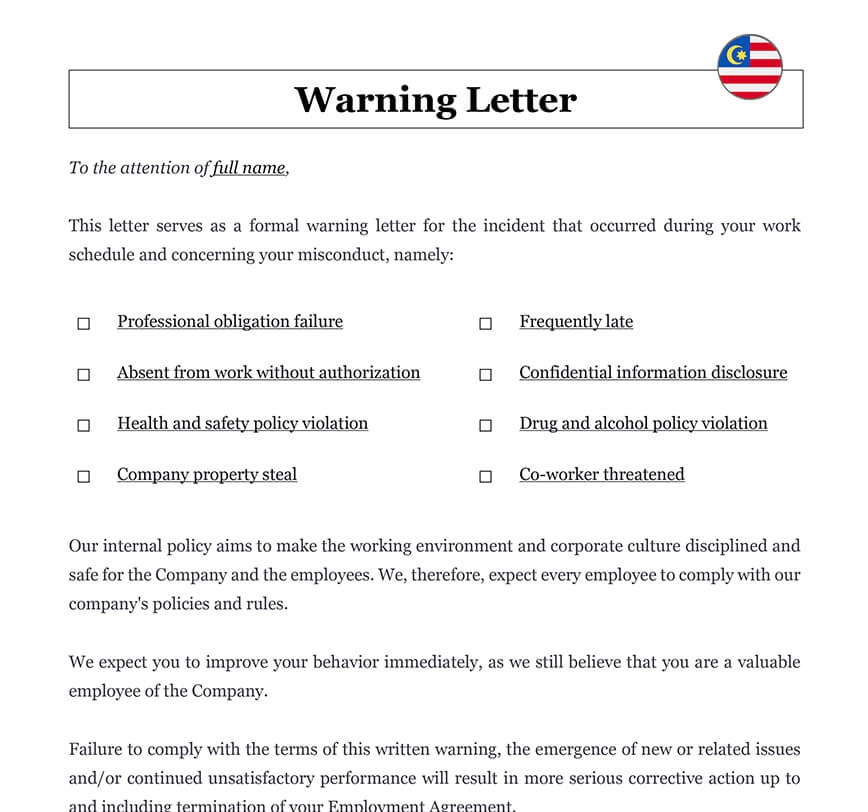Ready to use legal template
Drafted by experienced lawyers
Compliant with Malaysian law
Ready to use legal template
Drafted by lawyers
Compliant with Malaysian law
Learn more about Employee Warning Letter in Malaysia
An Employee Warning Letter is used to inform of poor behaviour or performance that does not meet the standards and expectations of the company. A director, manager or HR can issue a warning letter to an employee. Knowing how to write a warning letter can help you take appropriate disciplinary action and ensure its effectiveness. Here we explain everything you need to know about warning an employee before potentially resorting to a termination letter. This letter is easy to customize in word format and can be used for various employee misconduct.
Table of contents
-
What is an Employee Warning Letter?
-
What is included in the Warning Letter?
-
How to draft an Employee Warning Letter?
-
Why use an Employee Warning Letter in Malaysia?
-
When do you use an Employee Warning Letter?
-
What is the legislation in Malaysia regarding Warning Letters?
-
What is the last written warning?
What is an Employee Warning Letter?
A warning letter is a sort of business advice given to employees who have broken the rules before their job is terminated. This letter is designed to act as a warning and advice to employees, encouraging them to become more disciplined at work, even if they work from home. If the employee continues to repeat the same violation after receiving the third warning letter, the employer has the option to dismiss or lay off the employee. This letter is delivered when employees repeatedly make mistakes while failing to follow the company’s rules and regulations established under The Companies Act 1965. Because of the disorderly behavior of individuals who are no longer considered company employees, termination of employment is a last resort.
What is included in the Warning Letter?
The warning letter should include:
| ➤ Details of the performance or conduct issue of concern |
| ➤ What has been discussed with the employee about the issue |
| ➤ What the employer will do to assist |
| ➤ An action plan outlining the steps the employee must take |
| ➤ Areasonable timeframe within which the changes or improvements must be implemented |




